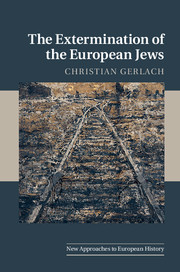Part III - The European dimension
Published online by Cambridge University Press: 05 March 2016
Summary
On November 25, 1941, the largest political show of force of Hitler's international coalition took place in Berlin. High representatives of thirteen member states of the Anti-Comintern Pact – Germany, Italy, Japan, Hungary, Manchukuo, Spain, Bulgaria, Nanking China, Croatia, Denmark, Finland, Romania and Slovakia – met to demonstrate their participation in the fight against the Communist International and also their mutual political support in general. The last seven signed the revised treaty on that day. The German press called the meeting a “world sensation.” But what a strange coalition it was! Despite their official condemnation of communism, these states varied considerably in their political systems and economies as well as their involvement in World War II. Denmark, an occupied and neutral country according to the Danish Foreign Minister, Erik Scavenius, had outlawed the Communist Party but would not declare war on any state (including the USSR) because the population would not support that. Franco's regime in Spain, which had come to power in what it portrayed as a largely anti-communist civil war, argued that it had to remain neutral in World War II because of the devastation it had already suffered. Finland's Foreign Minister, Rolf Witting, was happy that his country fought against the USSR but did not commit itself to declaring war on Great Britain. By contrast, Bulgaria did so in December 1941 while at the same time refusing to declare war on the Soviet Union, despite its fiercely anti-communist government, because of its historic cultural ties with Russia. Hungary and Romania, which both had troops on the Eastern Front, also had troops amassed along their common border and within weeks would come close to armed hostilities against each other; and Romania's Antonescu conspired against Hungary during the meeting in Berlin. And the Japanese representative, Ambassador General Nagisa Oshima, did not even reveal (either openly or in secret talks) that his country would attack the USA within two weeks, let alone the fact that Japan would not invade the Soviet Union. Of the thirteen member states of the Anti-Comintern Pact in late 1941, only seven entered the war with the USSR.
- Type
- Chapter
- Information
- The Extermination of the European Jews , pp. 311 - 314Publisher: Cambridge University PressPrint publication year: 2016

